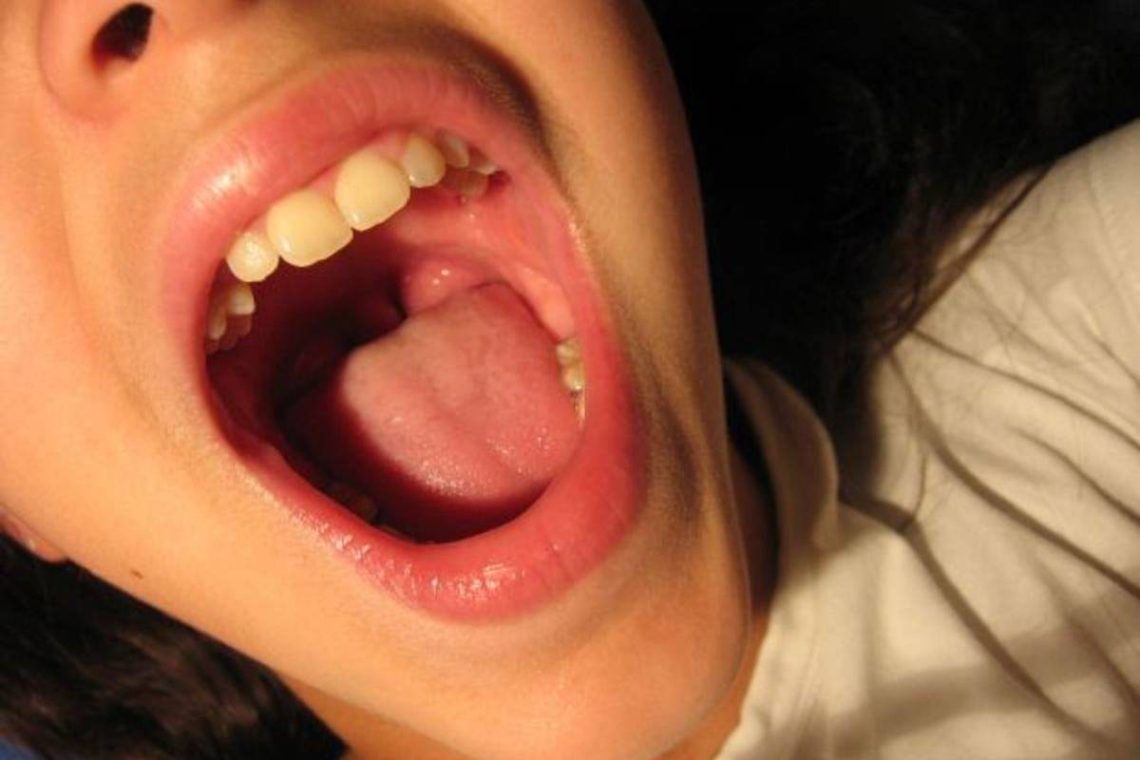There are different types of lumps in the palate. Some cause pain or discomfort. However, others develop entirely asymptomatic. Whatever the situation, all bump on roof of mouth should be checked at the dentist’s office.
The palate – the roof of the mouth – is at the top of the oral cavity. It is made up of both bone and a thick, striated mucosa. In addition, the palate has numerous salivary glands, nerves, and blood vessels.
What do I do if I have a bump on roof of mouth?
A lump in our oral cavity can be barely severe or indicate a more worrying disease. We insist that the first thing we should do in the presence of a lump on the palate is to go to our trusted dentist. In this way, they will diagnose to see the possible causes and apply the appropriate treatment. The tests usually performed to establish an effective diagnosis are intraoral radiography, CT, orthopantomography, and biopsy (in cases of tumors).
Only a specialist can accurately analyze and treat the pathology based on the circumstances of the case. A lump on the palate cannot be ignored. It is better to prevent and be safe.
How to Treat a Causes of Bump on Roof of Mouth

Diagnosis by a Dentist
- It is essential to determine the most appropriate treatment.
Torus Palatinus
- Asymptomatic and non-interfering: Usually not removed.
- Compromises treatment or causes discomfort: Can be removed with minor surgery.
Abscesses or Cysts
Treatment of underlying infection:
- Antibiotics
- Endodontic treatment (root canal therapy)
Malignant Tumor and Pyogenic Granuloma
Excisional biopsy:
- Remove the lesion.
- Analyze the sample to determine if additional treatment is necessary.
Types, Characteristics, and Treatment of lumps on the palate
| Type of Lump | Description | Characteristics | Treatment |
| Torus Palatinus | A bony growth in the middle of the hard palate. | Hard lump, smooth or lumpy, grows slowly, often asymptomatic. | Surgical removal if it interferes with dentures or becomes irritating. |
| Nasopalatine Duct Cyst | A cyst that develops behind the two front teeth in the incisive papilla. | Painless, it often goes unnoticed. | Surgical removal if infected or irritating. |
| Canker Sores | Small sores on the roof of the mouth, tongue, or inside lips and cheeks. | Pain, difficulty swallowing, sore throat, red/white/yellow sores. | Usually self-healing in a week; larger ones may last up to 4 weeks. OTC numbing agents for pain. |
| Cold Sores | The herpes simplex virus causes fluid-filled blisters on the lips or roof of the mouth. | Painful blisters, tingling, stinging, rupture, and crust over. | Heal within 2-3 weeks. Prescription medications can speed healing. |
| Epstein Pearls | Whitish-yellow cysts on newborns’ gums and the roof of the mouth. | 1-3 mm in size, appear alone or in groups. | Usually, go away within 3 months of birth. |
| Mucous Cyst (Mucocele) | Mucus cysts formed due to irritation of a salivary gland. | Round, dome-shaped, mucus-filled, transparent/blue/red. | Usually rupture on their own; may require minor surgery if persistent. |
| Squamous Papilloma | Noncancerous masses caused by HPV can form on the roof of the mouth. | Painless, slow-growing, cauliflower-like, white or pink. | Surgical removal if problematic. |
| Injuries | Sensitivity or damage to the tissue on the roof of the mouth from burns, cuts, or irritation. | Pain, bleeding, burning, bruising, firm, smooth scar tissue. | Self-healing: warm salt water or diluted hydrogen peroxide for faster healing. |
| Hyperdontia | Condition with too many teeth, often developing in the roof of the mouth behind front teeth. | Facial pain, headache, jaw pain. | Dental X-rays can detect extra teeth that can be removed. |
| Ectopic Teeth | Extra teeth grow away from usual areas, sometimes on the roof of the mouth. | Often asymptomatic, it less commonly appears in the nose or sinuses. | Dental evaluation and removal if necessary. |
| Strep Throat | Infection causes red bumps or spots on the roof of the mouth. | Sore throat, redness, swelling, fever, absence of cough. | Antibiotics prescribed by a doctor. |
| Oral Cancer | Cancer develops in the mouth or on the lips, sometimes in salivary glands on the roof of the mouth. | Lump, sore that doesn’t heal, bleeding sore, jaw pain, red/white patches. | It depends on location and stage; increased risk with tobacco use. |
When to See a Doctor
- Ongoing pain that is not improving
- A sore that won’t heal
- A serious burn
- Painful chewing or swallowing
- Lump changes in size or appearance
- Foul-smelling odor in your mouth
- Dentures or other dental devices no longer fit properly
- The new lump that doesn’t go away after a few weeks
- Trouble breathing
Conclusions
As you have read, numerous types of lumps on the palate, each with a different cause and appearance.
Our advice is that you don’t trust its appearance. Even if it is tiny or does not bother you, we recommend you go to the dentist to check it.

